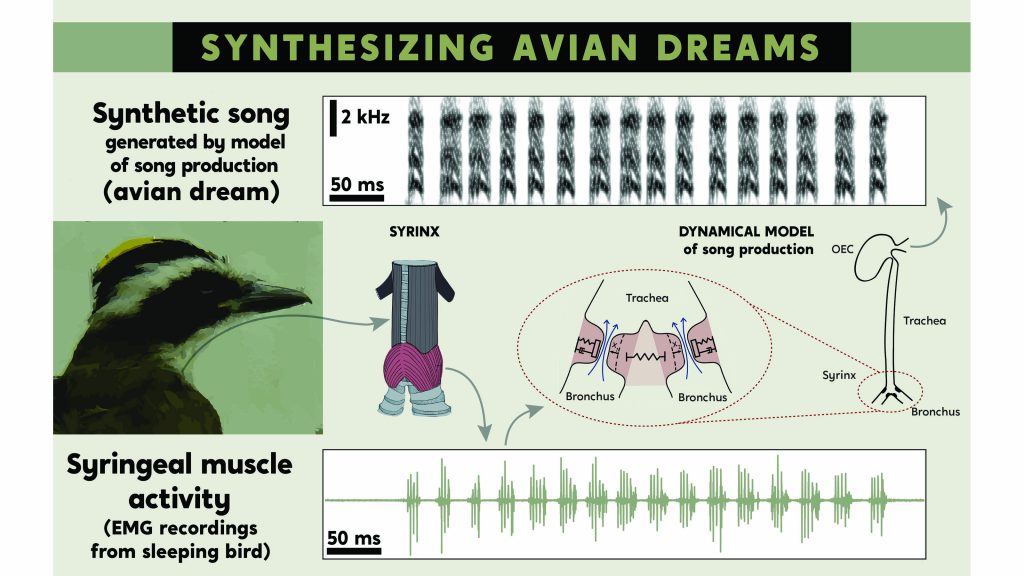Researchers translate vocal muscle activity of birds during sleep into synthetic songs.
From the Journal: Chaos
WASHINGTON, April 11, 2024 — For more than 20 years, researchers have known that areas of birds’ brains dedicated to singing show neural patterns during sleep akin to the ones they use while awake and singing.

Since the “code” behind how this information gets processed is unknown, it hasn’t been possible to map a pattern of nocturnal activity to song. Until now.
In Chaos, from AIP Publishing, a team of researchers from the University of Buenos Aires report a method to translate the vocal muscle activity of birds during sleep into synthetic songs.
“Dreams are one of the most intimate and elusive parts of our existence,” said author Gabriel Mindlin, who specializes in exploring the physical mechanisms of birdsong. “Knowing that we share this with such a distant species is very moving. And the possibility of entering the mind of a dreaming bird — listening to how that dream sounds — is a temptation impossible to resist.”
A few years ago, Mindlin and colleagues discovered that these patterns of neuronal activity descend to the syringeal muscles — a bird’s vocal apparatus. They can capture sleep birds’ muscular activity data via recording electrodes, called electromyography (EMG), and then use a dynamical systems model to translate it into synthetic songs.
“During the past 20 years, I’ve worked on the physics of birdsong and how to translate muscular information into song,” said Mindlin. “In this way, we can use the muscle activity patterns as time-dependent parameters of a model of birdsong production and synthesize the corresponding song.”
Many bird species have complex musculature, so translating syringeal activity into song is a bit of a challenge.
“For this initial work, we chose the Great Kiskadee, a member of the flycatcher family and a species for which we’d recently discovered its physical mechanisms of singing, and presented some simplifications,” said Mindlin. “In other words: we chose a species for which the first step in this program was viable.”
Hearing the sounds emerge from the data of a bird dreaming about a territorial confrontation with a raised crest of feathers — a gesture that during the day is associated with a trill used in confrontations — was incredibly moving for Mindlin.
“I felt great empathy imagining that solitary bird recreating a territorial dispute in its dream,” he said. “We have more in common with other species than we usually recognize.”
The team’s study presents biophysics as a new exploratory tool capable of opening the door for the quantitative study of dreams.
“We’re interested in using these syntheses, which can be implemented in real-time, to interact with a bird while it dreams,” said Mindlin. “And for species that learn, to address questions about the role of sleep during learning.”
###
For more information:
Wendy Beatty
media@aip.org
301-209-3090
Article Title
Authors
Gabriel B. Mindlin, Juan Francisco Döppler, Melina Atencio, and Ana Amador
Author Affiliations
The University of Buenos Aires
